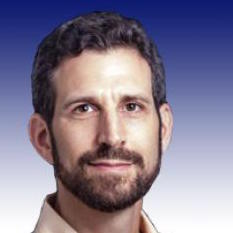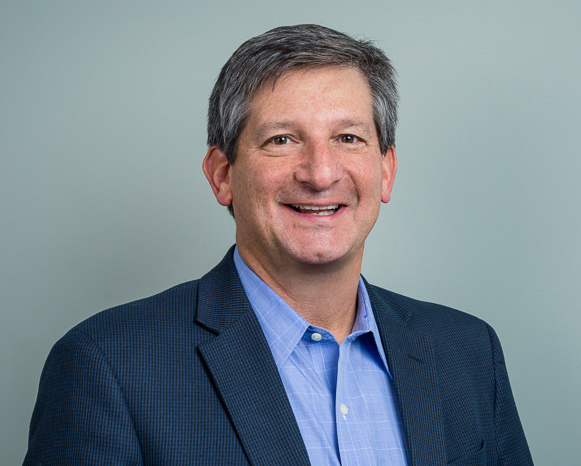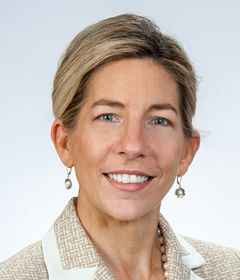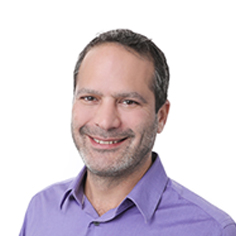Consumer preference to utilize a mobile health app: A stated preference experiment
One prominent barrier faced by healthcare consumers when accessing health services is a common requirement to complete repetitive, inefficient paper-based documentation at multiple registration sites. Digital innovation has a potential role to reduce the burden in this area, through the collection and sharing of data between healthcare providers. While there is growing evidence for digital innovations to potentially improve the effectiveness and efficiency of health systems, there is less information on the willingness of healthcare consumers to embrace and utilise technology to provide data.
Zipari: Rising Above the Pandemic to Deliver a Superior Member Experience
New White Paper from Zipari: Rising Above the Pandemic to Deliver a Superior Member Experience
In this white paper, learn how health plans can continue to deliver superior member experiences and build trust when faced with an emergency health crisis, like the spread of COVID-19. Download this new white paper and discover how to:
- Keep members informed and at-ease during a crisis with targeted next best actions via their preferred channels
- Deliver the right message to the right member through the right channel at the right time
- Develop sticky self-service features to encourage more usage of member portal, mobile app, and chatbot technologies
- Arm customer service representatives with powerful, yet easy-to-use, call center technologies
- Reduce unnecessary call volume in call centers due to smart and precise self-service features in portals and apps
Envisioning a Better U.S. Healthcare System for All: Healthcare Delivery and Payment System Reforms
The American College of Physicians (ACP) has long advocated for universal access to high-quality health care in the United States. Yet, it Is essential that the U.S.health system goes beyond ensuring coverage, efficient delivery systems, and affordability. Fundamental restructuring of payment policies and delivery systems is required to achieve a health care system that puts patients' interests first and supports physicians and their care teams to deliver high-value,patient-and family-centered care.ACP calls for reform of U.S. payment, delivery, and information technology systems to achieve this vision. The ACP's recommendations include increased investment in primary care; alignment of financial incentives to achieve better patient outcomes, lower costs, reduce inequities in health care, and facilitate team-based care; freeing patients and physicians of inefficient administrative and billing tasks and documentation requirements; and development of health information technologies that enhance the patient-physician relationship.
Quickly Expanding Medicaid Eligibility as an Urgent Response to COVID-19
They looked at how long it took late-expanding states (those that expanded eligibility after the initial implementation of ACA reforms in January 2014) to start enrollment. Though the length of time from state authorization (legislation or executive order) to enrollment varied considerably across states, once a state secured federal approval, some states began implementation very quickly. Maine’s governor signed an executive order to implement Medicaid expansion on January 3, 2019 (her first day in office), and enrollment began just a week later. The governor of Indiana and the federal government agreed to an alternate Medicaid expansion plan on January 27, 2015, and enrollment began on February 1, 2015. Alaska’s governor used executive authority to expand Medicaid eligibility, announcing it on July 16, 2015; the expansion was implemented a month and a half later on September 1. Though these fast turnarounds were not typical of late expansion states, they demonstrate an ability to implement these programs expeditiously.
Webinar Presentation: Rapidly Deployed Remote Monitoring for COVID-19
Americans have been encouraged to limit visits to doctors and hospitals in order to ease the burden on medical staff and reduce the risk of exposure to others.
Please join our discussion to hear how a hospital in Israel and a 5-hospital health system have deployed a remote monitoring system to manage patients at home and also coordinate with public health officials.
A recording of the webinar and the presentation slides can be found at the bottom of this page.
Speakers:
Levi Shapiro
Founder, mHealth Israel
 Levi Shapiro is Head of the Digital Health Program at Hebrew University’s BioMED MBA program. He is the Founder of mHealth Israel, a non-profit with 7,500 members, supporting the Israeli digital health technology community. He writes about healthcare and technology for publications including Jerusalem Post, holds Board positions with Israeli health technology startups and provides strategic advisory to prominent US companies. In a career spanning Beijing, Tokyo, Milan and Tel Aviv, Mr. Shapiro launched new business units (IBM), new products and services (Toyota) and a variety of technology startups. He is an investor and Board Member in Israeli health tech startups and formerly a General Partner in an Israel-based venture capital firm. Mr. Shapiro holds degrees from Tulane (BA), Cornell (Asian Studies) and MIT (MBA).
Levi Shapiro is Head of the Digital Health Program at Hebrew University’s BioMED MBA program. He is the Founder of mHealth Israel, a non-profit with 7,500 members, supporting the Israeli digital health technology community. He writes about healthcare and technology for publications including Jerusalem Post, holds Board positions with Israeli health technology startups and provides strategic advisory to prominent US companies. In a career spanning Beijing, Tokyo, Milan and Tel Aviv, Mr. Shapiro launched new business units (IBM), new products and services (Toyota) and a variety of technology startups. He is an investor and Board Member in Israeli health tech startups and formerly a General Partner in an Israel-based venture capital firm. Mr. Shapiro holds degrees from Tulane (BA), Cornell (Asian Studies) and MIT (MBA).
Al Kinel
President, Strategic Interests, LLC
 Al Kinel is founder and President of Strategic Interests, LLC, a consulting firm dedicated to transforming healthcare through innovation. Al and his firm works with health systems, health plans, providers, collaboratives and vendors on strategies and initiatives to create a long-lasting, positive impact through the innovative use of IT. Al spent the formative years of his career with top-tier professional services firms and was a leader in technology management for Xerox and Kodak/Carestream Health. At Carestream he was VP of Corporate and Government Healthcare where he managed commercial activities with Kaiser, VA, and others, and successfully lobbied to accelerate health data and image exchange. Al is a thought-leader, community activist, and catalyst who is active at a local, state, and national level with organizations including eHealth Initiative where he serves on the Leadership Council. As a volunteer, he initiated the concept of the Rochester RHIO, and attained alignment and funding from community stakeholders and NY State.
Al Kinel is founder and President of Strategic Interests, LLC, a consulting firm dedicated to transforming healthcare through innovation. Al and his firm works with health systems, health plans, providers, collaboratives and vendors on strategies and initiatives to create a long-lasting, positive impact through the innovative use of IT. Al spent the formative years of his career with top-tier professional services firms and was a leader in technology management for Xerox and Kodak/Carestream Health. At Carestream he was VP of Corporate and Government Healthcare where he managed commercial activities with Kaiser, VA, and others, and successfully lobbied to accelerate health data and image exchange. Al is a thought-leader, community activist, and catalyst who is active at a local, state, and national level with organizations including eHealth Initiative where he serves on the Leadership Council. As a volunteer, he initiated the concept of the Rochester RHIO, and attained alignment and funding from community stakeholders and NY State.
Bridgette Wiefling, MD
Senior Vice President Primary Care, Advanced Solutions Institute, Rochester Regional Health
 Dr. Wiefling is a practicing internal medicine physician at Rochester Regional Health. In her current role as senior vice president, she is responsible for building a robust primary care network that is adaptive to new challenges and opportunities in health care. She plays a critical role leading the Rochester Regional delivery system transformation under the evolution of new payment models. She spearheads innovative strategies and technology to redesign delivery of medical services in a way that reduces cost and improves quality while integrating care across the continuum. Dr. Wiefling has served in multiple leadership roles for the system, including chief quality officer and senior vice president and executive director of the Rochester General Medical Group. Prior to joining Rochester Regional, she was the CEO of the Anthony L. Jordan Community Center.
Dr. Wiefling is a practicing internal medicine physician at Rochester Regional Health. In her current role as senior vice president, she is responsible for building a robust primary care network that is adaptive to new challenges and opportunities in health care. She plays a critical role leading the Rochester Regional delivery system transformation under the evolution of new payment models. She spearheads innovative strategies and technology to redesign delivery of medical services in a way that reduces cost and improves quality while integrating care across the continuum. Dr. Wiefling has served in multiple leadership roles for the system, including chief quality officer and senior vice president and executive director of the Rochester General Medical Group. Prior to joining Rochester Regional, she was the CEO of the Anthony L. Jordan Community Center.
Uri Bettesh
Founder and CEO at Datos

Mr. Uri Bettesh brings with him over 18 years of experience as a technology executive and a passionate entrepreneur with a proven track record of success in leading business operations and technology implementations. Uri is a visionary leader with the ability to initiate and execute innovative strategies, engage with highly professional management teams and lead to results in a fast-changing business environment. Uri brings his passion for technology to healthcare where he has demonstrated an ability to work with HMOs, leading health systems, and the Ministry of Health in Israel to deliver solutions to transform healthcare. He is now focused on bringing these capabilities to the US and other regions of the world. Prior to Datos, he served in various executive positions, such as GM of NCR Food Drug & Mass Merchandising division, VP Product of Retalix, and more. Uri holds a BSc in Industrial Engineering and a master’s degree in System Engineering both from the Technion, Israel Institute of Technology.
Here’s How Your Organization Can Make the Most of PatientGenerated Health Data
Remote monitoring and virtual care programs offer patients the ability to collect and transmit relevant health and wellness data to providers remotely. Clinicians can then monitor activity and biometric data — which might include blood pressure, heart rate, electrocardiograms or sleep data from wearables and apps. Based on the raw data or trends analysis, clinicians can provide data-driven treatment assessments and behavior recommendations for patients with various chronic and post-acute conditions.
Patient-Centered Healthcare via Patient Generated Health Data
Hospital and health system executives are developing and implementing new tactics to meet the healthcare industry’s core strategic need: a higher value of care at lower cost. This objective has been aided by advanced technological solutions in medical-grade remote patient monitoring (RPM) and consumer-grade devices and apps that track a wide variety of factors including biometric indicators, activity, sleep, moods, and emergency response. As a result, patient-generated health data (PGHD) has increased the potential to change the practice of medicine from an episodic model to one based on a continuum of care – marked by the availability of realtime data that can be managed to create actionable intelligence about the patient. However, the U.S. healthcare system is facing a variety of challenges that make it difficult for patients and providers to benefit from the increased flow of PGHD.
Health workers fear U.S. hospitals will become coronavirus hot spots
Health workers fear U.S. hospitals will become coronavirus hot spots
Doctors and nurses are increasingly worried they will become the spreaders of the coronavirus rather than the healers, as hospitals themselves become a hot spot for the pandemic.
That fear is already a reality in Italy, the global epicenter of the pandemic, where researchers have found hospitals overloaded by COVID-19 patients have become transmission points. Public health officials, like those at the World Health Organization, have increasingly warned that health care workers themselves could be vectors for the disease — accelerating its spread and undermining the ability of countries’ health systems to combat it.
The full Politico article can be viewed at this link.
The Toughest Triage — Allocating Ventilators in a Pandemic
The Toughest Triage — Allocating Ventilators in a Pandemic
The COVID-19 pandemic has led to severe shortages of many essential goods and services, from hand sanitizers and N-95 masks to ICU beds and ventilators. Although rationing is not unprecedented, never before has the American public been faced with the prospect of having to ration medical goods and services on this scale.
Of all the medical care that will have to be rationed, the most problematic will be mechanical ventilation. Several countries, but not the United States, have already experienced a shortage of ventilators. Acute care hospitals in the United States currently have about 62,000 full-function ventilators and about 98,000 basic ventilators, with an additional 8900 in the Office of the Assistant Secretary for Preparedness and Response Strategic National Stockpile. The Centers for Disease Control and Prevention estimates that 2.4 million to 21 million Americans will require hospitalization during the pandemic, and the experience in Italy has been that about 10 to 25% of hospitalized patients will require ventilation, in some cases for several weeks. On the basis of these estimates, the number of patients needing ventilation could range between 1.4 and 31 patients per ventilator. Whether it will be necessary to ration ventilators will depend on the pace of the pandemic and how many patients need ventilation at the same time, but many analysts warn that the risk is high.
The full perspective can be downloaded below.
Keeping the Coronavirus from Infecting Health-Care Workers
Keeping COVID-19 from Infecting Health-Care Workers
The message is getting out: #StayHome. In this early phase of the coronavirus pandemic, with undetected cases accelerating transmission even as testing ramps up, that is critical. But there are many people whom the country needs to keep going into work—grocery cashiers, first responders, factory workers for critical businesses. Most obviously, we need health-care workers to care for the sick, even though their jobs carry the greatest risk of exposure. How do we keep them seeing patients rather than becoming patients?
The full New Yorker article can be viewed at this link.
